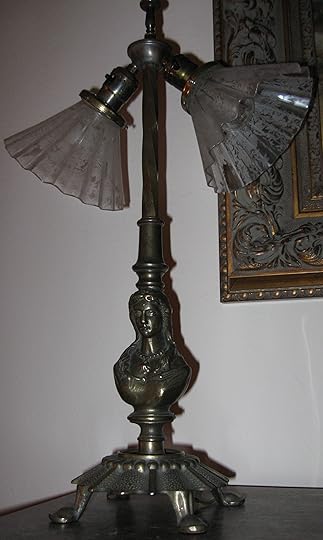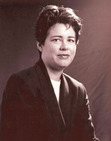Writing Ergonomics: Lighting
My very first personal computer was an IBM. It did only text. No graphics. No Internet. I had a choice of green or amber for text display. I liked the amber better, but I chose green because the salesman assured me this was "air-traffic-controller" green, designed to mitigate eyestrain.
As a myopic novelist, I needed to dodge eyestrain as much as possible. (And still do!)
Today, of course, that kind of equipment seems prehistoric. But although my computer now does graphics, streams television episodes, and stores my personal photographs, eyestrain avoidance remains my objective.
I try to remember to take short breaks so that my eyes don't get blurry and fatigued. I wear computer glasses. And I always seek optimum lighting for my office.
Presently, my home office offers dismal illumination. Four blazing bulbs hang suspended from a ceiling fan, casting glare behind me as I work. Not good!

Terrific ceiling fan in my office, but the lights are all wrong.
During the day, my lone office window captures only indirect sunlight until the late afternoon when the sun stabs into the periphery of my right eyeball, creating more glare.
As people get older, their retinas thicken, which means less light reaches their vision. In other words, a 60-year-old needs ten times more light to see as well as a 20-year-old.
Other factors that affect aging eyes include sensitivity to glare, less ability to detect contrasts, and a dimming of color perception.
I didn't know this until recently. Yet during the past several months, I've been accruing a lot of lamps. My home looks like a lamp store.
Granted, I'm a collector. I'm also still arranging the house since moving in. So all the lamps that belong in the library happen to still be stacked around the living room.

This copper-finished bridge lamp is destined for my library, but currently it's been orphaned in an undecorated corner of the house.
Nevertheless, I've also realized that my middle-aged eyes are demanding more light. In my 20s, I utilized two table lamps and a floor lamp in my living room. Today, my living room sports four powerful torchieres, five table lamps, two lamps on the fireplace mantel, a light on the ceiling fan, and recessed spots in the ceiling. Let's blame part of that on the new house's architecture. Ten-foot ceilings are hard to illumine well. I keep switching on lamps, and the general effect remains soft and dim.
Still, we're here to discuss writing and how to make it comfortable. To counter the dreadful lighting in my office, I always make sure that I have at least one light source on besides my computer monitor. And I'm working on arranging fixtures around the room to provide my workspace with better quality of light.
According to an article on lighting from Stan Pomeranz (www.lighttechdesign.com/agingeyes.htm), higher illumination may be desirable, but that doesn't mean a fixture should be excessively or uncomfortably bright. (In other words, don't aim for an operating theater!) Instead, there should be more fixtures of lower wattage. Also, task lighting should be adjustable for location, direction, and intensity to accommodate individual needs.
In my office, I want to shield my eyes from glare. That means better window treatments to counter the late-afternoon sun. I'd also like a substitute for those ceiling-fan light bulbs blasting down from above.
Adding ambient light will make the room more psychologically appealing. To that end, I've added a couple of low-wattage, attractive lamps in opposite corners.
My general lighting should be brighter. (But without glare.) If I can fit a torchiere into the room to cast light upward and bounce it down from the ceiling, perhaps that will solve the problem.
And I need good task lighting. Ott lamps offer full-spectrum light that replicates natural sunlight pretty well. I should have one next to my computer monitor. The style of Ott's products doesn't fit my decor, but then neither does old Steel-and-Formica (my computer desk). Meanwhile, I plan to ask my lamp restorer if Ott lightbulbs can be used in antique lamps. I don't see why not.

This Ott light is very chic, sleek, and modern. It casts a narrow beam of clear, soft light straight down, making it good for desktop work.








C. Aubrey Hall's Blog
- C. Aubrey Hall's profile
- 7 followers








